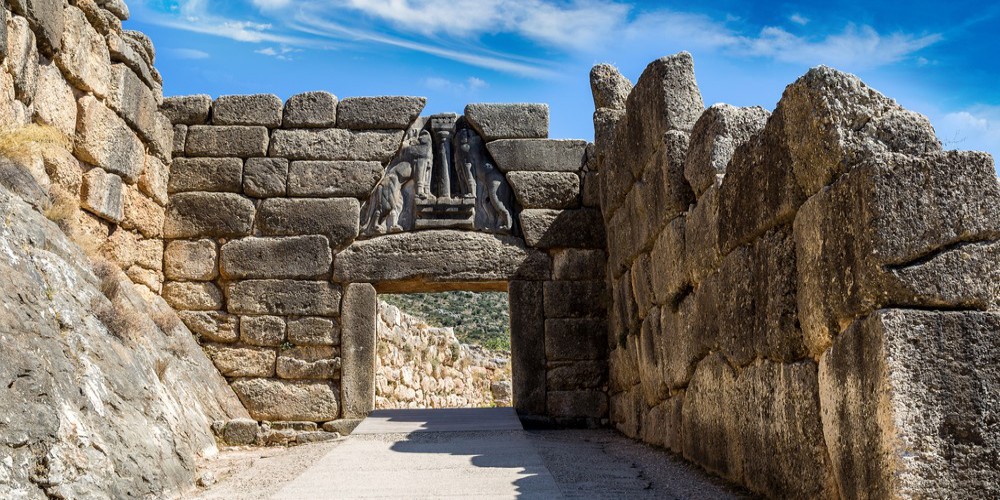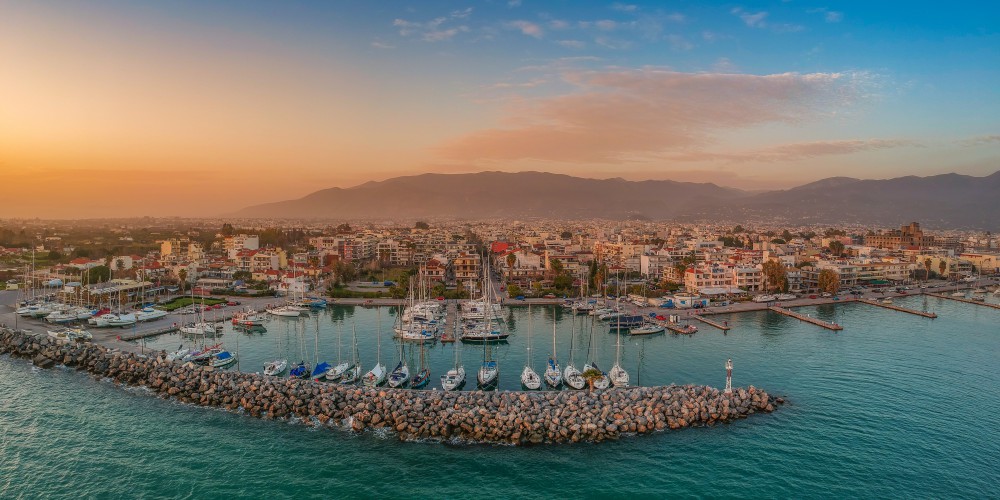
Mystras: Exploring the Ruins of a Byzantine Ghost City
Key Takeaways
- Mystras was a pivotal Byzantine stronghold and cultural hub in medieval Greece.
- It is a UNESCO World Heritage site with significant archaeological and architectural heritage.
- The site attracts visitors for its historic value and encapsulates the evolution of an ancient city.

Under the shadow of Mount Taygetos in the Peloponnese region of Greece, the ancient city of Mystras is a testament to medieval history.
Once the Byzantine capital of the Despotate of the Morea, Mystras was a beacon of Byzantine culture and political power in the 14th and 15th centuries.
Its strategic position near ancient Sparta made it an important military stronghold inside the city walls.
Meanwhile, its numerous palaces, churches, and monasteries highlight a period where religious and secular powers intertwined.
Today, Mystras is recognized as a UNESCO World Heritage site, drawing visitors from around the world who come to explore its extensive archaeological remains and remarkable cultural renaissance.
The Founding and Historical Importance of Mystras
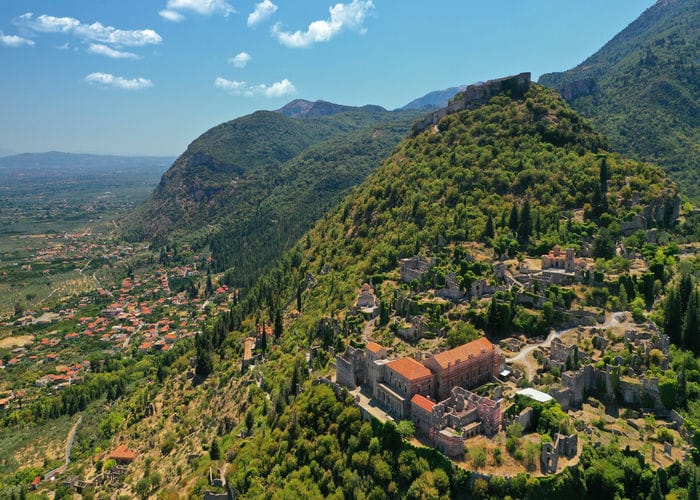
Mystras was a pivotal city of the Byzantine era, establishing itself as a provincial capital and a cultural beacon from the 13th to the 15th centuries.
The Establishment of Mystras in the 13th Century
The medieval city of Mystras was established in 1249 by William II of Villehardouin, a prince of Achaia.
It was constructed on a 620-meter-high hill overlooking Sparta, and it began as a fortress designed for defense during a period characterized by conquest and re-conquest.
One of the most notable figures of Mystras, who played a pivotal role in its course, was Emperor John VI Kantakouzenos, who had settled in Mystras after his abdication.
He installed his son Manuel as the first despot with a life term.
Mystras as the Capital of the Byzantine Despotate of the Morea
Following the fortress' surrender to the Byzantines in 1262, Mystras flourished under Byzantine influence and became the capital of the Despotate of the Morea.
As the Byzantine Despotate, Mystras served as an administrative and cultural center, enabling the preservation and continuation of Byzantine laws, traditions, and art.
The Cultural and Political Peak of Mystras
During the mid-14th to the mid-15th centuries, Mystras experienced its golden age both culturally and politically.
It was during this period that Mystras became known for its intense intellectual activity and for its significant contributions to the preservation of the Byzantine cultural heritage.
Monuments such as St. Demetrios, the church of Agia Sofia (Hagia Sophia) of Mystras, and the Monastery of Peribleptos were all central to this cultural renaissance.
The town was adorned with palaces, churches, and monasteries, highlighting the architectural grandeur of a thriving Byzantine city.
Mystras remained inhabited until the 1830s, leaving behind a legacy as one of the most important historical sites of the Byzantine era.
Exploring the Archaeological Site of Mystras
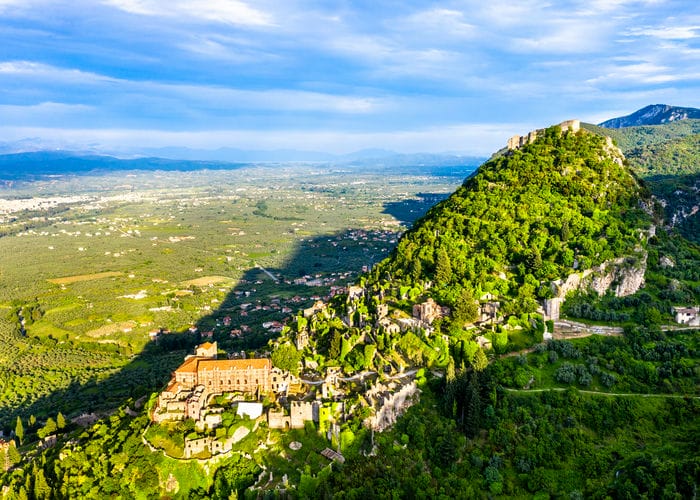
The Ancient Site of Mystras, a fortified town in the Peloponnese region of Greece, offers a vivid glimpse into the Byzantine era.
This UNESCO Heritage Site encompasses an array of well-preserved palaces, churches, and monasteries adorned with beautiful frescoes.
Layout and Structure of the Site
Mystras is divided into two main sections in Southern Greece: the Upper Town and the Lower Town.
The upper part is dominated by the Frankish castle, strategically positioned atop a hill, providing a defensive overlook of the region.
Winding streets and remains of residencies cascade down the slopes, tracing the terrain towards the lower section where trade and daily activities once flourished.
Key Monuments and Buildings: Palaces, Churches, and Monasteries
Notable structures within Mystras include the palaces of the Despotate of Morea, reflecting the architectural splendor of the Byzantine era.
They functioned as administrative and residential centers. Among the sacred sites, the Pantanassa Monastery stands out with its operational convent, while Agios Demetrios and other churches reveal the cultural and religious influence of the Byzantine period through their preserved state.
- Palaces: Symbol of power and artistry.
- Pantanassa Monastery: Active religious site with historical value.
- Churches: Showcasing Byzantine ecclesiastical architecture.
The Frescoes and Byzantine Art of Mystras
The interiors of Mystras' buildings are renowned for their frescoes, a testament to the rich artistic tradition of the time.
These frescoes exhibit a vivid palette and intricate details that provide insights into the spiritual and aesthetic values of the Byzantine people.
The art found in Mystras is significant for art historians and visitors alike.
- Frescoes Characteristics: Vivid colors and religious narratives.
- Artistic Value: Reflects the zenith of Byzantine cultural expression, and post-byzantine art.
Mystras' Architecture: A Blend of Military and Ecclesiastical Styles
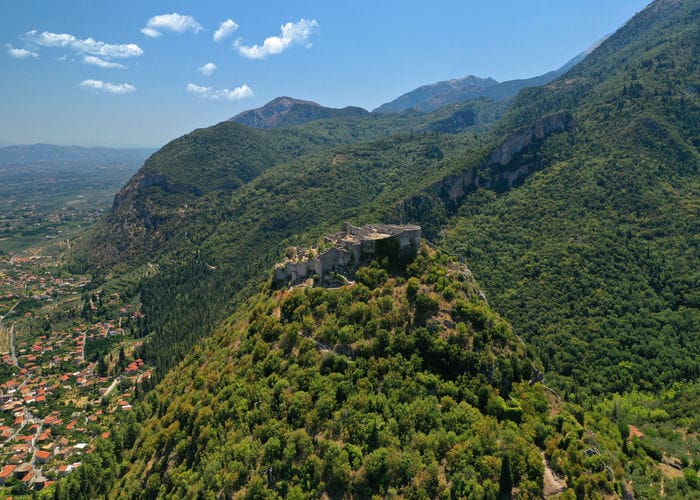
Mystras' architectural landscape is a rich tapestry that integrates military features with religious significance, epitomized by its formidable fortress and array of Byzantine churches.
The Fortress and Its Military Architecture
Mystras, perched strategically on the slopes of Mt Taygetos, is anchored by a fortress that once served as a critical military bastion in the Peloponnese.
The sturdy walls and defensive structures exemplify the practical aspects of military architecture, designed to safeguard the Despotate of the Morea.
Its towers, battlements, and gates all tell of a history steeped in the need for protection and control.
- Key Components: Defensive walls, gates, and towers
- Purpose: Protection and military oversight
The Influence of Byzantine Ecclesiastical Architecture
Within its fortified boundaries, Mystras houses an exquisite collection of Byzantine churches that reflect the town's ecclesiastical wealth and cultural vigor.
The Palace of the Despots, another significant architectural feat, displays the dual nature of Mystras as a center of both secular and religious power.
The churches boast characteristic Byzantine features such as brickwork patterns, ornate facades, and fresco-adorned interiors.
- Notable Churches: Hagioi Theodoroi, the Hodegetria, and the Peribleptos
- Architectural Features: Brick patterns, domes, and frescoes
Unique Architectural Features of Mystras
Mystras' architecture is distinguished by a harmonious blend of local and foreign influences, marked by the evolution of the Late Byzantine style.
Unique features include the use of local stone in construction and the integration of both Gothic elements and traditional Greek design.
This coalescence creates a visually distinctive and recognizable aesthetic that differentiates Mystras from other Byzantine sites.
- Materials Used: Predominantly local stone
- Stylistic Fusion: Gothic elements incorporated with Byzantine and Hellenistic styles
The Fall and Decline of Mystras
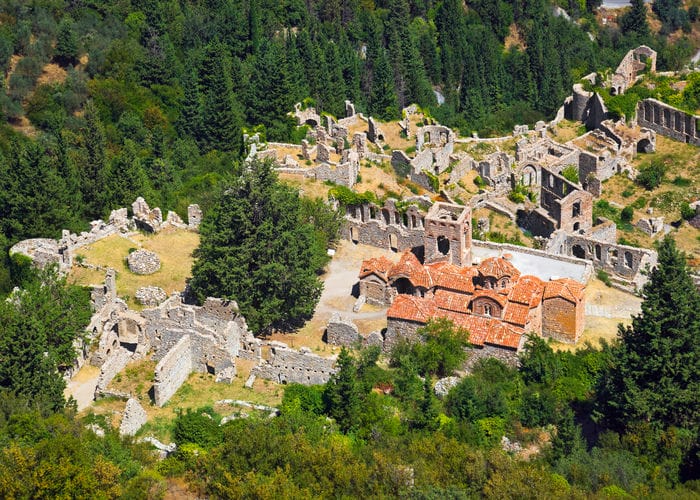
Mystras experienced a significant transformation with the advent of Ottoman rule, leading to its gradual decline and eventual desertion.
The Ottoman Conquest and Its Impact
The Ottoman Conquest began when the city of Mystras fell to the Ottoman Turks in 1460, subsequent to the collapse of the Byzantine Empire.
Constantine xi Palaiologos, who ruled Mystras from 1443 to 1449, was the last Byzantine emperor.
The Ottomans, under the leadership of Sultan Mehmed the Conqueror, cemented their control over the region, marking a pivotal change in Mystras's governance and its sociopolitical environment.
This takeover effectively ended the Byzantine Morea, which had Mystras as its capital.
The impact of Ottoman ascendancy on Mystras was multifaceted. Initially, the city continued to flourish under Ottoman administration.
Over time, however, the pressures from Ottoman governance, coupled with the broader decline of the Byzantine cultural influence, began to alter the city's dynamics.
The intellectual and cultural activities that had thrived during the Byzantine era started to wane, as the region's economic and strategic importance diminished in the eyes of the Ottoman Empire.
The Decline and Eventual Abandonment of Mystras
The decline of Mystras was a gradual process, influenced by both external conflicts and internal changes within the Ottoman Empire.
The decline accelerated when the Greek War of Independence erupted in the early 19th century.
In 1823, during the war, troops under Ibrahim Pasha rampaged through the region, a devastating event that contributed to a significant loss of life and hastened the city's abandonment.
By the 19th century, Mystras was little more than a shadow of its former self. The population had dwindled, and many of its once-grand structures fell into disrepair.
The establishment of the modern town of Sparta, located approximately 9 kilometers away from Mystras, marked a new chapter for the local population, as they moved away from the decaying city.
Eventually, Mystras was left in ruins, its streets and buildings abandoned, serving as a poignant relic of a once-thriving center of the late Byzantine world.
Visiting Mystras Today: A Travel Guide
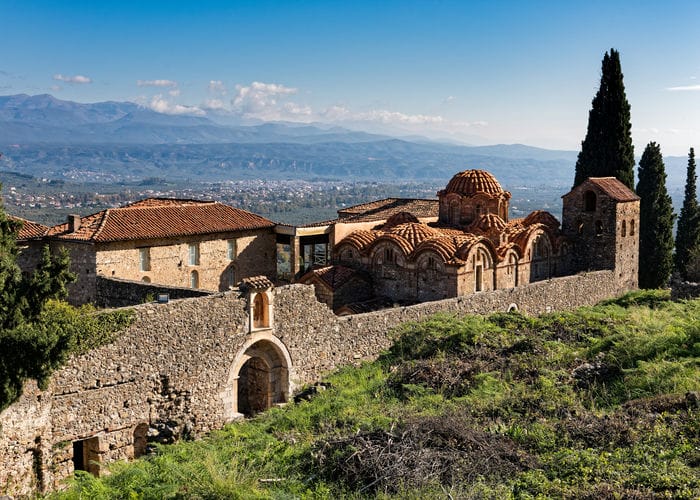
Mystras, an important archaeological site in Greece, offers a window into Byzantine history. Visitors can explore well-preserved churches, palaces, and monasteries within its captivating ruins.
Best Times to Visit Mystras
Spring and autumn are ideal for touring the modern city of Mystras, due to the mild weather conditions.
These seasons offer a comfortable climate for visitors to explore the extensive site without the extreme heat of summer or the unpredictable weather of winter.
Accessibility and Getting to Mystras
Mystras is accessible by car and bus services from Athens and other major cities.
The nearest town is Sparta, which is approximately 5 km away from the site. There is parking available for those who opt to visit by car.
- By car: The drive from Athens takes around 2.5 hours.
- By bus: Public transportation services from Athens to Sparta are frequent, and from there, local buses or taxis can take visitors to Mystras.
Facilities and Visitor Information
At Mystras, visitors will find the necessary facilities to ensure a comfortable visit.
There is an information center where visitors can learn about the site, and walking paths are well-maintained for easier navigation. Restrooms and water fountains are available throughout the site.
- Opening Hours: Varies seasonally; check in advance.
- Tickets: Purchase at the entrance or online.
Tips for Touring the Archaeological Site
Visitors should wear comfortable walking shoes as Mystras spans a hillside with uneven terrain. An early start is recommended to avoid crowds and the heat of the day.
Guides are available for hire to enhance the experience with detailed historical insights.
- Photography: Allowed, but drones may be restricted.
- Accessibility: Some areas may not be easily accessible for those with mobility issues.
The Modern Village of Mystras
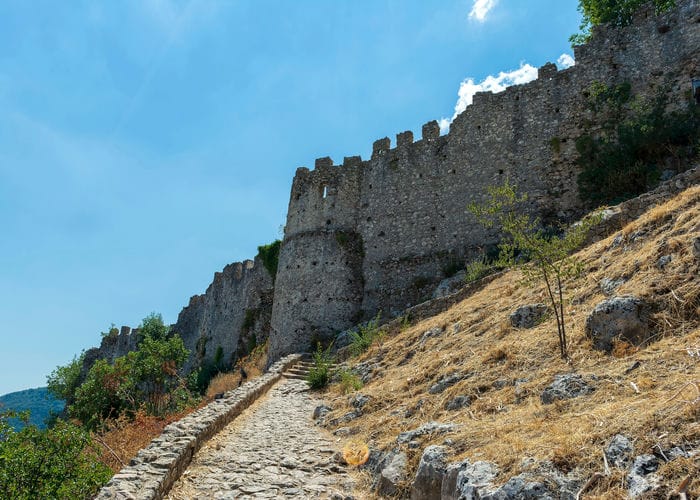
The modern village of Mystras sits in close proximity to its ancient namesake, offering a charming base for tourists exploring the historical site.
It provides necessary conveniences and a taste of contemporary local life amidst a historically rich landscape.
Life in the Modern Village Near the Ancient Site
Mystras's modern village thrives just a stone's throw from the ruins, serving both the daily needs of its residents and the influx of tourists.
The village benefits from a serene and picturesque setting, anchored by traditional Byzantine architecture and the history that surrounds it.
Local life is often centered around agriculture, with the bountiful landscape providing for people's livelihoods.
Accommodations and Amenities for Tourists
Visitors to the area may not find a wide range of accommodations, but only a few miles from Mystras, they can find amazing options in the surrounding area.
Our top picks include Euphoria Retreat - A Holistic Wellbeing Destination Spa, which we consider the best hotel in the Peloponnese, Kyniska Palace, and Mystras Grand Palace Resort & Spa.
Local Culture and Traditions
In the village, one witnesses an amalgamation of the past and present through its cultural expressions and traditions.
The locals uphold a rich tapestry of customs, best seen during local festivals and in their hospitality towards visitors.
The traditional town squares play host to gatherings and social activities, cementing the sense of community within the village.
- Crafts: Local artisans create works that reflect the village's historical significance.
- Cuisine: Tavernas and cafes serve traditional Greek dishes, emphasizing local produce.
Here, the essence of Greek history is not only preserved in the partially restored ruins but also echoed in the daily lives and traditions of the modern village's only inhabitants.
Mystras' Influence on Greek Culture and Identity
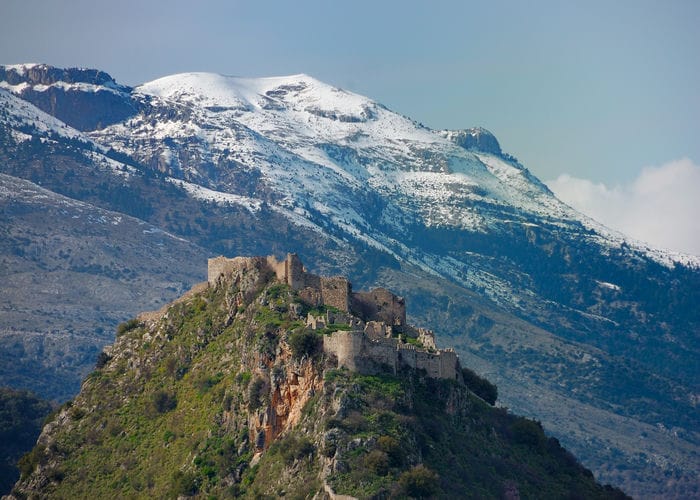
The city's ruins stand as a reminder of the Byzantine legacy and its contribution to current Greek identity.
Mystras’ role as a center of Byzantine learning and culture is a source of national pride, often referred to in discussions about Greek heritage.
- Cultural Contributions:
- Mystras as an embodiment of Greek intellectual prowess
- Influence on Greek educational and philosophical discourse
- Symbolic presence in modern cultural celebrations and festivals
By remaining a testament to Greek resilience and continuity, Mystras continues to weave its legacy into the fabric of Greek culture, both past and present.
Final Thoughts

Mystras remains a significant archaeological site, reflecting its illustrious history and Byzantine heritage.
Today, the careful balance of preservation and accessibility contributes to Mystras' appeal.
Down the hillside pathways, one experiences the convergence of nature and history, an encounter that the infrastructure supports without detracting from the site's authenticity.
Visiting Mystras in Greece is an experience to be cherished. It is an opportunity every visitor to Greece should seek if they want to experience the authenticity of the country in a unique blend of history, culture, and natural beauty.
Sounds right up your street, doesn't it?









